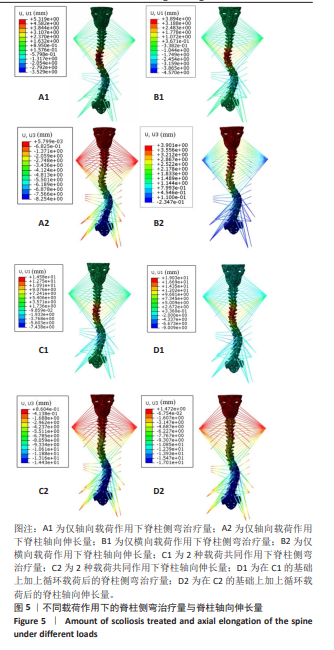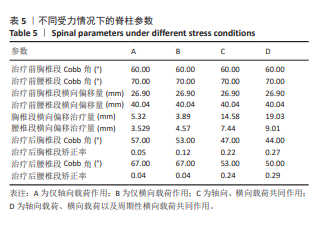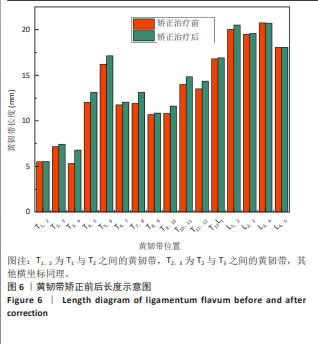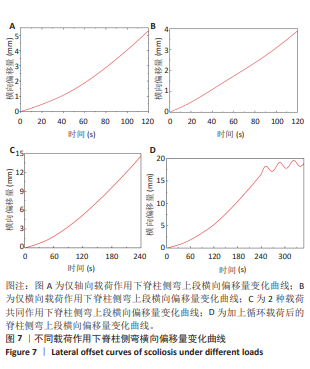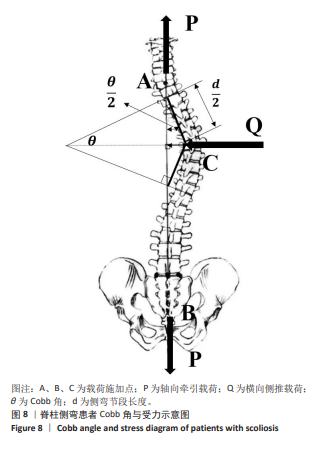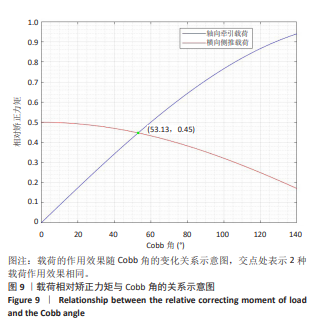[1] 王媛媛,王辉昊,丁立鹏,等.上海市中小学生脊柱侧弯现状及影响因素分析[J].颈腰痛杂志,2025,46(1):84-88.
[2] WIJNGAARDE CA, BRINK RC, DE KORT FAS, et al. Natural course of scoliosis and lifetime risk of scoliosis surgery in spinal muscular atrophy. Neurology. 2019;93(2):e149-e158.
[3] TUĞBA KÇ, DURMUŞ BB, ECE ZS, et al. Systematic review of clinical outcome parameters of conservative treatment of adolescent idiopathic scoliosis patients. J Clin Med. 2025;14(4):1063.
[4] PETROSYAN E, FARES J, AHUJA CS, et al. Genetics and pathogenesis of scoliosis. NASSJ. 2024: 100556.
[5] 张玉芳,郭海伟,吕蒙,等.脊柱侧弯矫正力计算分析[J].机械设计与制造,2025(7):30-34.
[6] 陈静静,孙锡杰,李婉.长三角地区中学生脊柱弯曲现状及影响因素[J].中国学校卫生,2023,44(1):135-138.
[7] 李梦,曲亚斌,孙艺,等.广东省中小学生脊柱侧凸流行特征及影响因素分析[J].中国学校卫生,2022,43(2):292-295.
[8] NEGRINI S, AULISA AG, AULISA L, et al. 2011 SOSORT guidelines: orthopaedic and rehabilitation treatment of idiopathic scoliosis during growth. Scoliosis. 2012;7:1-35.
[9] KIM H, CHANG BS, CHANG SY. Current issues in the treatment of adolescent idiopathic scoliosis: a comprehensive narrative review. Asian Spine J. 2024;18(5):731-742.
[10] WILKE HJ, GROßKINSKY M, RUF M, et al. Range of international surgical strategies for adolescent idiopathic scoliosis: Evaluation of a multi‐center survey. J Spine. 2024;7(2):e1324.
[11] KIRAM A, HU Z, MA H, et al. Development of ethnicity-adjusted global alignment and proportion score to predict the risk of mechanical complications following corrective surgery for adult spinal deformity. Spine J. 2024;24(5):877-888.
[12] ANSARI K, SINGH M, MCDERMOTT JR, et al. Adolescent idiopathic scoliosis in adulthood. Efort Open Rev. 2024;9(7):676-84.
[13] 李苗秀,朱博文,孔令军,等.青少年脊柱侧弯保守治疗临床评估工具研究进展[J].中国全科医学,2025,28(24):3079-3088.
[14] ZUHAIMI UH, SIDEEK MA M, ISMAIL AFH. Effectiveness of Lyon Method In Treating Adolescent Idiopathic Scoliosis: A Scoping Review. Int J Health Sci. 2024.
[15] BŁACHNIO K, KOPCIAŁ S, PIECUCH D, et al. Conservative treatment of adolescent idiopathic scoliosis (AIS): A narrative review of current evidence and implications for clinical practice. Qual Sport. 2024;22: 54352-54352.
[16] ZHANG Q, BÍRÓ I. Biomechanical Analysis and Modeling of Different Traction Patterns in Adolescent Idiopathic Scoliosis. Anal Tech Szegedin. 2024;18(3):88-100.
[17] 张浩阳,潘英森,叶鑫,等.牵引干预治疗青少年特发性脊柱侧弯的应用现状[J].中医儿科杂志,2024,20(4):92-95.
[18] 王东旭,李峰平,孙冬,等.治疗青少年特发性脊柱侧弯的牵引方法:有限元研究[C]//中国体育科学学会.2024年国际竞技体育生物力学论坛暨第二十三届全国运动生物力学学术交流大会论文摘要集.宁波大学,体育学院,2024.
[19] 夏纪元,杨云飞,黄立军,等.Halo-骨盆牵引治疗重度脊柱侧弯畸形的效果及其对肺功能的影响[J].武警医学,2024,35(3):230-234.
[20] WU L, ZHENG A, GUAN T, et al. Biomechanical analysis of scoliosis correction under the influence of muscular and external forces. J Clin Neurosci. 2025;132:110991.
[21] HE W, LI JL, WANG JY, et al. Optimization of traction parameters for lumbar scoliosis. BMC Musculoskelet Disord. 2024;25(1):472.
[22] WANG J, LI Q, FENG F, et al. Measurement of Corrective Force Changes Under Scoliosis Brace in Different Spine Postures. BSN 2024. IEEE, 2024:1-4.
[23] 黄凯, 柳超. 应用三维有限元方法评价寰椎横韧带对寰枢椎复合骨折稳定性的影响[J]. 中国临床研究,2024,37(5):729-734.
[24] TONG H, HALILAJ E, ZHANG YJ. HybridOctree_Hex: Hybrid octree-based adaptive all-hexahedral mesh generation with Jacobian control. J Comput Sci. 2024;78:102278.
[25] EL RM, ARNOUX PJ, WAGNAC E. Finite element investigation of the loading rate effect on the spinal load-sharing changes under impact conditions. J Biomech. 2009;42(9):1252-1262.
[26] 李文成.脊柱矫正力的计算与分析[D].大连:大连交通大学,2018.
[27] 汤清.颈椎牵引新设备的研究及全颈椎模型的建立与仿真[D].郑州:郑州大学,2018.
[28] 何俊霖.基于3D打印智能脊柱矫形系统研究[D].杭州:杭州电子科技大学,2023.
[29] TAKASHIMA ST, SINGH SP, HADERSPECK KA, et al. A model for semi-quantitative studies of muscle actions. J Biomech. 1979;12(12): 929-939.
[30] WYNARSKY GT, SCHULTZ AB. Optimization of skeletal configuration: studies of scoliosis correction biomechanics. J Biomech. 1991;24(8): 721-732.
[31] 黄莞沨,曲爱丽,李立,等.人体脊柱动力学数值仿真分析模型建立及验证[J].医用生物力学,2024,39(2):250-257.
[32] 陈群响,倪斌,郭群峰,等.带肌肉组织全颈椎三维有限元模型的建立及分析[J].中国脊柱脊髓杂志,2019,29(4):348-355.
[33] SCHMIDT H, SHIRAZI-ADL A, GALBUSERA F, et al. Response analysis of the lumbar spine during regular daily activities—a finite element analysis. J Biomech. 2010;43(10):1849-1856.
[34] 刘治华,汤清,陶德岗,等.全颈椎三维有限元模型的建立及旋转牵引疗法研究[J].生物医学工程研究,2018,37(3):362-366+376.
[35] HAMZAOGLU A, OZTURK C, AYDOGAN M, et al. Posterior Only Pedicle Screw Instrumentation With Intraoperative Halo-Femoral Traction in the Surgical Treatment of Severe Scoliosis (>100°). Spine (Phila Pa 1976). 2008;33(9):979-983.
[36] WATANABE K, LENKE LG, BRIDWELL KH, et al. Efficacy of perioperative halo-gravity traction for treatment of severe scoliosis (≥100°). J Orthop Sci. 2010;15:720-730.
[37] D’ASTOUS JL, SANDERS JO. Casting and Traction Treatment Methods for Scoliosis. Orthop Clin North Am. 2007;38(4):477-484, v.
[38] 雷蕾,李文成,翟贇.Lenke1A/B型脊柱侧弯矫形生物力学计算分析[J].医用生物力学,2018,33(4):306-311.
[39] 王莉,王纯,夏楠,等.脊柱侧凸康复机器人的研制及对冠状面畸形的即刻矫正效果初探[J].中华物理医学与康复杂志,2021,43(10): 899-903.
[40] PANJABI MM, WHITE AA. Basic biomechanics of the spine. Neurosurgery. 1980;7(1):76-93.
[41] EDWARDS CR, LIOU CJ, AHMED S, et al. A Case-Based Review of Spine Ligamentous Anatomy and Pathology. Contemp Diagn Radiol. 2024;47(17):1-8.
[42] MANDEGARAN R, QUINN-LAURIN V. Spine anatomy. In: Clinical Atlas of Bone SPECT/CT. Springer Int Publ, 2024: 1199-1202.
[43] 吴爱悯,郭振宇,王向阳.脊柱生物力学2023年度研究进展[J].医用生物力学,2024,39(2):187-196.
[44] NACHEMSON AL, EVANS JH. Some mechanical properties of the third human lumbar interlaminar ligament (ligamentum flavum). J Biomech. 1968;1(3): 211-220.
[45] WHITE A. Clinical biomechanics of the spine. Clin Biomech Spine. 1990.
[46] ROLANDER SD. Motion of the lumbar spine with special reference to the stabilizing effect of posterior fusion: an experimental study on autopsy specimens. Acta Orthop Scand. 1966;37(sup90): 1-144.
[47] WANG X, LI H, ZHU Q, et al. Effectiveness and safety of robot-assisted versus fluoroscopy-assisted pedicle screw implantation in scoliosis surgery: a systematic review and meta-analysis. Neurosurg Rev. 2024; 47(1): 108.
[48] ELMESHNEB MA, HASSANIN MA, ELNADY B, et al. Surgical complications in neuromuscular scoliosis surgery: Systematic review and meta-analysis of the last ten years. Eur Spine J. 2024;33(7): 2666-2676.
[49] ELREFAEY A. Iatrogenic descending thoracic aorta perforation by pedicle screws as a delayed complication of scoliosis correction surgery. The anesthetic management and TEE role. Saudi J Anaesth. 2025; 19(1):118-121.
[50] FENG R, TAO H, YE C, et al. A quantitative biomechanical study for precise orthopedic intervention in idiopathic scoliosis. RCAR 2022, Guiyang, China, 2022:664-669.
[51] CHEN ZQ, WANG CF, BAI YS, et al. Using Precisely Controlled Bidirectional Orthopedic Forces to Assess Flexibility in Adolescent Idiopathic Scoliosis. Spine (Phila Pa 1976). 2011; 36(20):1679-1684. |
